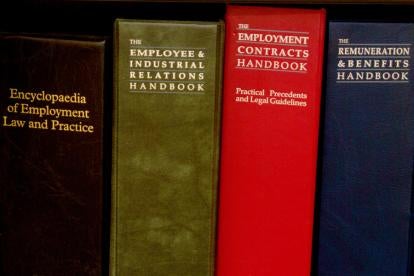There have been many precedent changing decisions coming from the NLRB in the last few years. Few of these changes were more hotly contested, or farther reaching, than the Board’s decision in Browning-Ferris where it altered its longstanding joint employer test. The new joint-employer test made it much more likely for a joint-employer relationship to be found to exist. The decision was fairly rare (at least for the last few years) because it actually involved 5 members (voting 3-2), instead of the much more common three person panel (when the Board actually has three valid members, unlike the now infamous “two member” and “recess appointment” eras).
The Board in Browning-Ferris ruled that the principal employer’s “actual” control over the employees of the contractor was no longer necessary. Under long established common law principles of agency, joint-employer status could be found by indirect means, such as the existence of a contractual provision between the principal and contractor stating that the principal has control over the work of the contractor, even if such control is not exercised. Two years later, a newer NLRB promptly reversed Browning-Ferris in Hy-Brand Industrials, but then had to reverse its reversal due to allegations that one of the majority Board members should have recused himself. The NLRB then announced that it was going to engage in rule-making over this issue.
The original Browning-Ferris case was appealed after it issued. Given that the NLRB intended to change the rule, the agency initially requested that the case be dismissed. Ultimately, the NLRB asked the federal appeals court to rule on the case because the common law principles upon which the decision rested were purely a matter of law to which the Court owed the agency no deference.
The Court of Appeals accepted the case and recently issued a decision in Browning-Ferris Industries of California, Inc. v. NLRB, Cases 16-1063 and 16-1064 (D.C. Cir. December 28, 2018). The decision provides an excellent summary, both of the history of the joint-employer standard under the National Labor Relations Act, and also of the practical and legal issues related to finding of joint-employer status. The Court does a great job of articulating what can be a complicated issue in simple terms.
Board Not Entitled to Deference on Issue of Common Law Employer Status
As to whether the underlying Board decision was entitled to deference, the Court ruled that Board was not entitled to deference and that it could consider the issue as a purely legal one. The Court also noted that its decision was appropriate despite the fact the Board was engaged in rule-making over this issue stating, “we see no point in waiting for the Board to take the first bite of an apple that is outside its orchard.” That apple being an analysis of common law agency.
Board’s Joint-Employer Test Finds Support in Common Law Principles
The Court then concluded that the Board’s analysis in Browning-Ferris was a correct reflection of the law. The Court noted, the Board’s “conclusion that joint-employer status considers not only the control and employer actually exercises over workers, but also the employer’s reserved but unexercised right to control the workers and their essential terms and conditions of employment, finds extensive support in the common law of agency.”
Board Failed To Articulate Facts Supporting its Conclusion of Joint-Employer Status
Despite its approval of the standard developed by the Board, the Court refused to enforce the ruling and instead remanded the case to the Board. The Court explained that the Board had failed to properly apply the standard to the facts of the case:
The problem with the Board’s decision is not its recognition that indirect control (and certainly control exercised through an intermediary) can be a relevant consideration in the joint-employer analysis. It is the Board’s failure when applying that factor in this case to hew to the relevant common-law boundaries that prevent the Board from trenching on the common and routine decisions that employers make when hiring third-part contractors and defining the terms of those contracts.
The Court ruled that the Board’s decision “failed to differentiate between those aspects of indirect control relevant to status as an employer and those quotidian aspects of the common-law third-party contract relationships.” In other words, the Board provided no “blueprint” for what counts as indirect control in its decision. The Court held that the “[G]lobal oversight *** is fully compatible with the relationship between a company and an independent contractor. Wielding direct and indirect control over ‘essential terms and conditions’ of employees’ work lives is not.” The Court ruled that because it could not tell which facts the Board relied upon in making its decision, it could not enforce the decision.
Board Failed to Identify Terms and Conditions of Employment Subject to Bargaining.
The Court also found fault in the Board’s new test regarding bargaining and joint employers. The Board held that even if under common law principles joint-employer status would be found, the Board will also ask “whether the putative joint employer possesses sufficient control over employees’ essential terms and conditions of employment to permit meaningful collective bargaining.” To this end, the Board required bargaining “but only with respect to those terms and conditions over which it possesses sufficient control for bargaining to be meaningful.” The Court found that the Board “did not meaningfully apply” this portion of its test because it did not identify which terms and conditions were “essential” to make bargaining “meaningful.” The Court noted that if the Board were to find the employer and its contractor were joint-employers that it would explain which terms and conditions are meaningful to bargaining and “clarify what ‘meaningful collective bargaining’ entails” and how it works in this setting.
Rule-Making Probably Will Be Final Say (Until A Different Board Changes the Standard in the Future)
In sum: the Court found that the Board properly concluded that indirect control could be considered as part of a common law analysis but that the Board failed to articulate how the two employers at issue were joint-employers, and, if they were joint-employers, how bargaining could be conducted and over what terms and conditions of employment. This case probably has very little implication in the short term because the current Board is unlikely to further the Browning-Ferris standard. The Court’s decision does give some important context to the practical issues faced by contracting employers alleged to be joint-employers. We will have to wait and see how the Board addresses this case in the rule-making. The Board extended the period to file comments in the rule-making in response to the Court’s decision. Comments are now due on February 11, 2019.



 i
i


